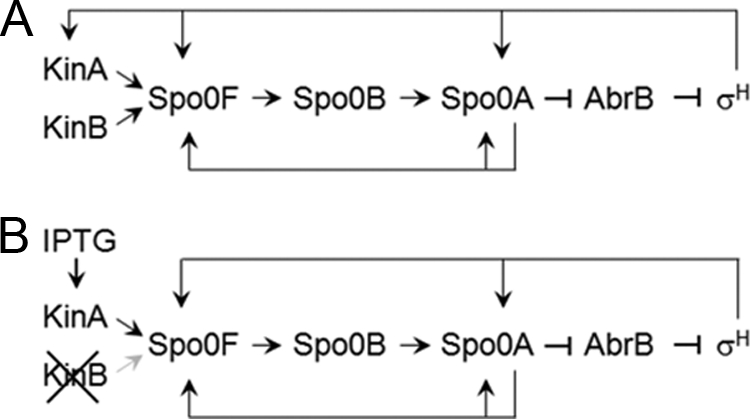FIG. 1.

Schematic diagram of the regulatory networks for the three cases used in this study. Arrows and T-shaped bars represent positive and negative actions, respectively. Black and gray symbols represent active and inactive pathways, respectively. (A) Phosphorelay in the wild-type strain (3, 21). Upon nutrient starvation, the KinA and KinB sensor histidine kinases provide phosphate input to the master transcriptional regulator, Spo0A, via two additional regulators, Spo0F and Spo0B. Phosphorylated Spo0A becomes a positive or negative regulator for sporulation genes, including those for Spo0A itself, Spo0F, and the transition state transcription regulator AbrB. AbrB represses the transcription of the sigH (spo0H) gene, encoding the alternative sigma factor σH, which is also essential for sporulation (49). Thus, phosphorylated Spo0A represses abrB, thereby stimulating σH expression. In turn, transcription of the genes for KinA, Spo0F, and Spo0A is activated in the closed-loop system. (B) Artificial phosphorelay system decoupling gene expression from the cell cycle. A strain in which the native promoter of kinA has been replaced by an IPTG-inducible promoter is able to sporulate in response to IPTG addition. A null mutation of kinB is introduced into the system to ensure that the network is dependent solely on KinA or the mutants studied.
